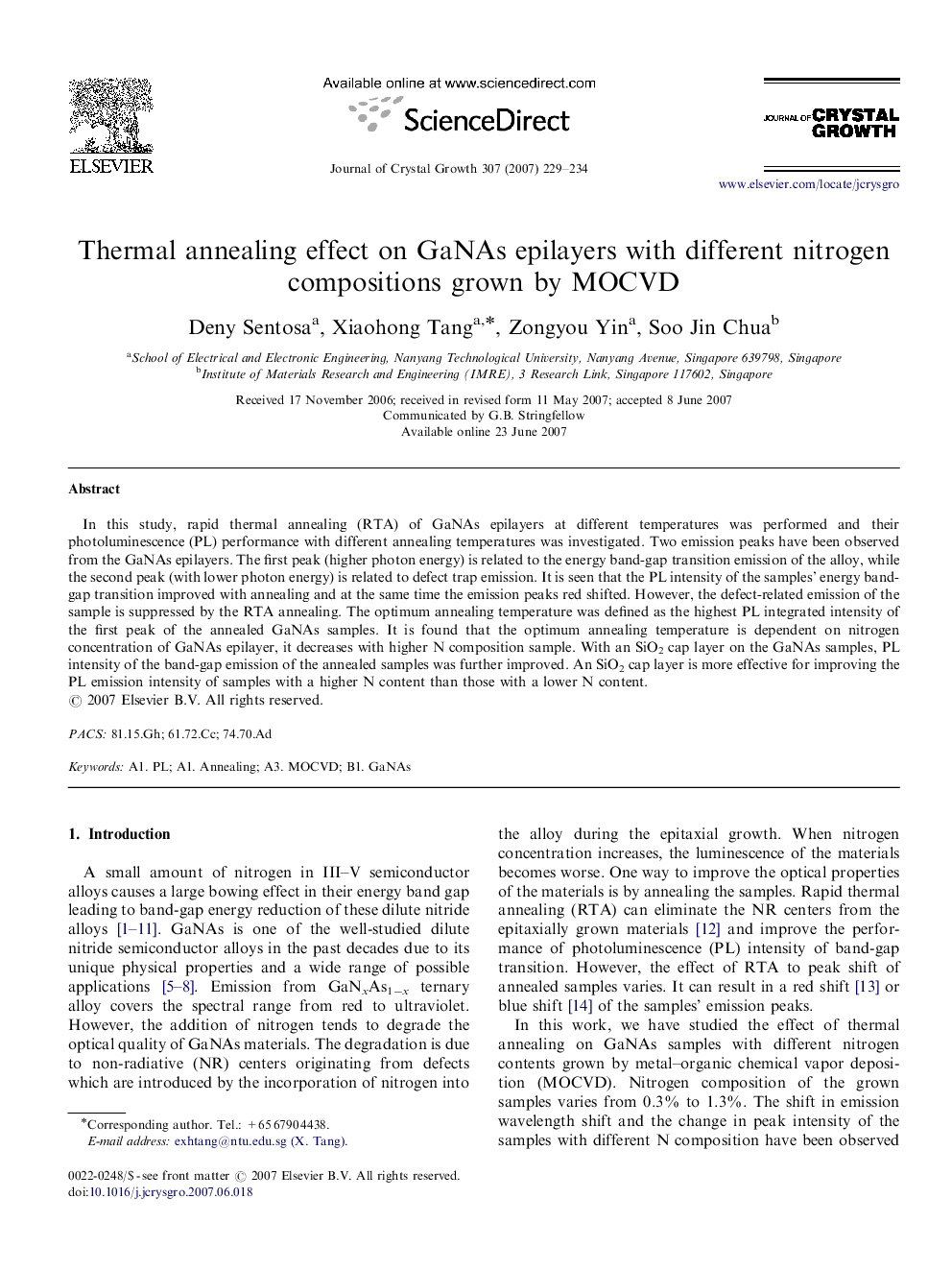| Article ID | Journal | Published Year | Pages | File Type |
|---|---|---|---|---|
| 1796388 | Journal of Crystal Growth | 2007 | 6 Pages |
Abstract
In this study, rapid thermal annealing (RTA) of GaNAs epilayers at different temperatures was performed and their photoluminescence (PL) performance with different annealing temperatures was investigated. Two emission peaks have been observed from the GaNAs epilayers. The first peak (higher photon energy) is related to the energy band-gap transition emission of the alloy, while the second peak (with lower photon energy) is related to defect trap emission. It is seen that the PL intensity of the samples' energy band-gap transition improved with annealing and at the same time the emission peaks red shifted. However, the defect-related emission of the sample is suppressed by the RTA annealing. The optimum annealing temperature was defined as the highest PL integrated intensity of the first peak of the annealed GaNAs samples. It is found that the optimum annealing temperature is dependent on nitrogen concentration of GaNAs epilayer, it decreases with higher N composition sample. With an SiO2 cap layer on the GaNAs samples, PL intensity of the band-gap emission of the annealed samples was further improved. An SiO2 cap layer is more effective for improving the PL emission intensity of samples with a higher N content than those with a lower N content.
Related Topics
Physical Sciences and Engineering
Physics and Astronomy
Condensed Matter Physics
Authors
Deny Sentosa, Xiaohong Tang, Zongyou Yin, Soo Jin Chua,
